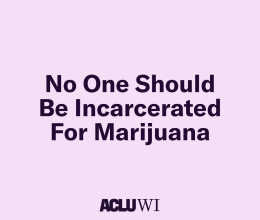
On April 20th, days after Milwaukee Police finally released body camera footage of a fatal police shooting that occurred two months prior, the Milwaukee Fire and Police Commission — the civilian oversight board that oversees MPD and the Milwaukee Fire Department — created a new standard operating procedure requiring MPD to publicly release police video footage within 15 days of deaths by police and other critical incidents. The very next day, the Milwaukee Police Association (MPA), the union that represents most of the city's officers, filed a lawsuit and have, for now, successfully stopped the new 15-day video release policy from going into effect.
Justifying their lawsuit, MPA stated in a press release that the FPC did not “consider the impact on officers they oversee.” Community activists, such as Maria Hamilton who lost her son Dontre to police violence, want to have access to body cams because they are oftentimes the only source of evidence that paints a clear and objective picture of police and civilian encounters.
Body cam footage, when handled responsibly, increases transparency in the wake of police shootings and makes us less reliant on the often one-sided, misleading portrayals provided by police departments. The initial police report detailing the killing of Tyre Nichols by the Memphis Police Department painted a completely different picture than the body cam footage, which was initially hidden from the public. The initial police report identified Nichols as a suspect in an aggravated assault, accusing him of starting a fight with officers and grabbing one of their guns. It didn’t mention that Nichols was beaten to death, and even described an officer later charged with homicide as a victim. The city of Memphis and the Memphis Police Department sat on this footage for almost a month while tarnishing Nichols’ name with bogus police reports. Disproving the fabricated story manufactured by the police, the body camera footage allowed us to discover what actually happened to Nichols.
This isn’t the only time that video footage proved that police reports lied about the events that led up to a civilian killing. The murder of Chicago teenager LaQuan McDonald was covered up by at least 16 officers through purposeful lies in the police report, disposal of evidence, and an effort to assassinate Mcdonald’s character. The public would not have known the truth of McDonald’s killing if the entire incident wasn’t recorded on the dash cam.
George Floyd was murdered by Minneapolis Police Department on May 25, 2020 and the public didn’t get to see the body cam footage until August 10, 2020. The initial police report for Floyd’s killing stated he simply died of “medical distress” and does not mention that the medical distress was brought on by an officer kneeling on Floyd’s neck as Floyd experienced seizures and cried out for help. Viewing video footage is the closest the public can come to obtaining the truth of a fatal encounter. Keeping the footage from the public sows further distrust from the community.
Some police departments allow police officers to review the footage of the killing or use of force before writing their report, giving officers time to create a justification around the situation. Police departments across the country like Chicago, New York City, Los Angeles, and other major cities spend massive amounts of money on professional public relations specialists that craft narratives after high-profile incidents. Suppressing footage gives police an advantage in shaping public opinion and protecting themselves from accountability. What other suspect is allowed to review the evidence, decide what is seen by the public, and have a team of professionals control the story around their crime?
The inability to trust police to be truthful about cases in which officers use force underscores why body cam footage is critical to ensuring law enforcement are transparent and accountable to the public. Without accountability, police lose community trust. We are witnessing that now: a 2022 Gallup poll found that only 45% of American adults are confident in the police. The numbers are even lower for communities of color.
Which brings us back to why community activists are calling for greater police transparency in Milwaukee — Black and Brown communities have known for a long time that police reports don’t always reflect reality and now the empirical evidence is catching up. We are often kept in the dark and left with endless questions after police use force during an encounter, but the FPC’s new body camera policy would allow people to get more answers.


